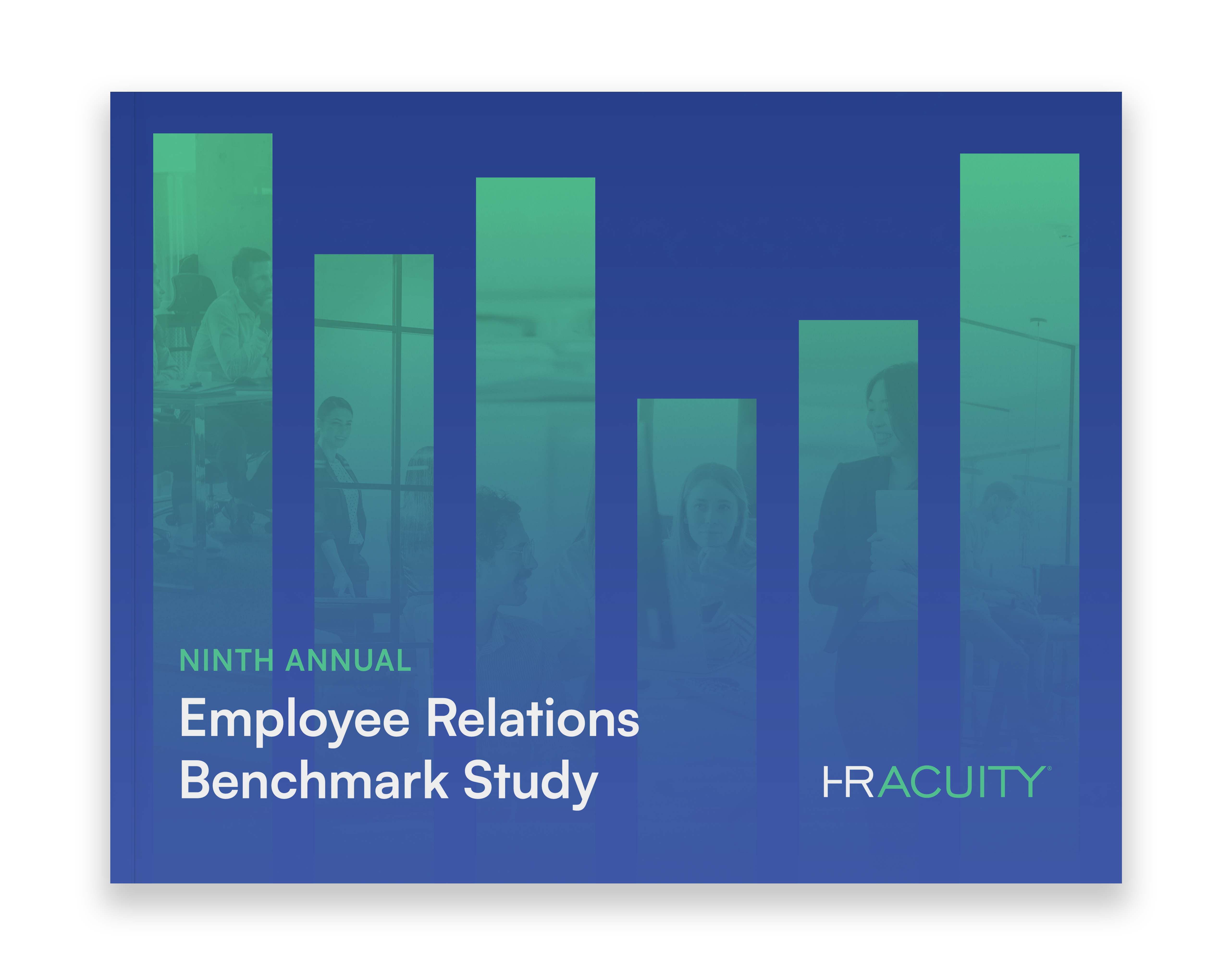HR analytics and metrics help us understand the stories behind employee experiences — what’s working, what’s not and where gaps may be putting your culture or compliance at risk. In this guide, we’ll break down the basics, show how they work together and explain why they matter for building a fair, supportive workplace.
What Are HR Analytics and Metrics?
HR metrics are the “what.” They tell us things like how many employee relations cases we’ve handled or how long they took to close. Analytics is the “why” — why certain patterns show up, what they mean and how we should respond.
When used together, metrics and analytics help us go beyond surface-level reporting — which is exactly why they’re so imperative. They let us see what employees are experiencing, where inequities may exist and how we can create better, more consistent outcomes across an organization.

Why HR Analytics and Metrics Matter for Employee Relations
Behind every data point is a person. HR analytics help us ensure that no voice gets lost and no pattern goes unseen. By translating everyday experiences into measurable insights, we’re able to:
- Detect early signs of employee dissatisfaction, disengagement or bias
- Identify inconsistencies in how policies are applied across departments
- Provide leaders with actionable information to improve team dynamics
When used with care and purpose, analytics helps HR become a more empathetic, responsive partner to employees. It turns insight into impact — so that we’re not just tracking compliance, we’re actively building a fairer system.
What Is the Difference Between HR Metrics and HR Analytics?
| HR Metrics | HR Analytics | |
| What it does | Measures activity and outcomes | Analyzes patterns, causes and implications |
| Example | “5 ER cases closed in March” | “3 of the 5 March cases were related to the same policy” |
| Focus | What happened | Why it happened and what should change |
| Purpose | Track performance | Improve decisions and outcomes |
HR metrics without analytics can feel disconnected — useful but incomplete. Analytics makes the data meaningful. It helps organizations make choices that center equity, transparency and employee well-being.
What Are the Four Types of HR Metrics?
Understanding the different types of HR metrics helps teams select the right tools for the job. Each type serves a specific purpose, and together, they tell a more complete story about your workforce.
What Are Descriptive HR Metrics?
Descriptive metrics tell you what is happening or what has already happened. They summarize activity and help establish baselines.
Examples:
- Total number of ER cases this quarter
- Average time to resolve issues
- Number of investigations by region or team
Descriptive metrics are a starting point. They bring clarity but they don’t explain the causes or recommend solutions. Still, descriptive metrics are essential for transparency and trend spotting.
What Are Diagnostic HR Metrics?
Diagnostic metrics help uncover the root causes behind observed patterns. They help answer the question: Why did this happen?
Examples:
- High case volume linked to a recent leadership change
- Escalations spiking in one department
- Repeat incidents pointing to insufficient training
These metrics are where analysis begins to shape intervention. They provide context that helps you respond with empathy and strategy.
What Are Predictive HR Metrics?
Predictive metrics anticipate future outcomes based on historical trends. They help HR teams prepare, rather than react.
Examples:
- Patterns in past behavior that signal future attrition
- Case frequency suggesting burnout risks
- Trends indicating potential policy noncompliance
When used responsibly, predictive metrics give HR the ability to prevent harm before it happens. They support proactive action rooted in employee well-being.
What Are Prescriptive HR Metrics?
Prescriptive metrics go one step further — they offer guidance on what actions to take. They suggest paths forward based on data patterns.
Examples:
- Training recommendations for departments with repeated violations
- Suggested updates to outdated or inconsistently applied policies
- Alerts for follow-up conversations with teams facing repeated issues
These insights help HR teams build a culture of accountability and care. They turn numbers into next steps.

What Are the Most Important HR Metrics for Employee Relations?
To truly support employees, data must reflect real workplace experiences. HR Acuity’s Annual Employee Relations Benchmark Study identified ten essential KPIs every ER team should track. These metrics help you measure trust, equity and outcome quality across your organization:
| KPI | What It Reveals About Employee Experience |
| Case volume per 1,000 employees by category | Normalizes issue activity to reveal cultural or team hotspots |
| EEOC cases per 1,000 employees | Shows trust gaps and compliance risk across external thresholds |
| Issue‑to‑case ratio | Surfaces complexity: multiple concerns per case means deeper impact and workload |
| Case disposition (substantiation rate) | Measures consistency in how issues are validated or dismissed |
| Employee relations staffing ratio | Connects ER capacity with actual demand and fair service levels |
| Hotline issues per 1,000 employees | Indicates whether people feel safe speaking up anonymously |
| Named vs anonymous reports | Reveals psychological safety and employee trust in the process |
| eNPS (Employee Net Promoter Score) | Shows overall confidence in the ER process and likelihood to report again |
| Legal or compliance risk exposure | Spots cases that carry legal consequences or elevated risk |
| Performance management impact (cost per employee) | Quantifies how much performance-related separations or interventions cost the organization |
These aren’t abstract figures. They tell stories about whether employees feel heard, whether processes are working fairly, whether interventions are effective and where trust is eroding. They inform decisions that improve outcomes and restore confidence.
For deeper definitions and benchmarking tips, download the full one‑pager 10 KPIs in Employee Relations You Should Be Tracking.
How to Start Using HR Analytics and Metrics in Your Organization
You don’t need to overhaul your entire HR system to begin using analytics. Start with a few thoughtful steps:
Step 1: Clean and Standardize Your Data
Accurate analysis starts with clean data. Make sure case categories, closure times and outcomes are consistently recorded.
Step 2: Choose Meaningful Metrics
Don’t try to track everything at once. Choose a small set of metrics that reflect your values— like fairness, timeliness and consistency — and start there.
Step 3: Connect Data to Action
Use a platform like HR Acuity that turns raw metrics into visualizations and insights. This helps frontline managers and HR teams respond quickly.
Step 4: Share Insights, Not Just Numbers
Bring metrics to life in conversations with leaders. Share not only what the data says but what it means for employees.
Step 5: Review Regularly and Evolve
Data shouldn’t sit in a dashboard. Revisit key metrics monthly or quarterly and update them as your goals and workforce change.
Why HR Analytics Is Essential for Building an Inclusive Workplace
At its core, HR analytics is about understanding people — not just performance. When we use data to surface experiences that would otherwise go unnoticed, we can create a better workplace.
It’s not about catching mistakes — it’s about catching missed opportunities to support our people.
Data can be a tool for control or a tool for care. We choose care. Every insight is a chance to do better, and every metric is a reminder that someone’s experience can be improved.

Put Your Data to Work with HR Acuity
HR Acuity turns metrics into momentum. Our purpose-built employee relations platform is designed to capture, analyze and act on the data that matters most. From real-time dashboards to benchmark comparisons and risk flags, HR Acuity helps you connect your metrics to measurable outcomes — so your team can lead with fairness, consistency and impact.
Whether you’re starting from spreadsheets or already a mature employee relations powerhouse, we give you the tools to drive proactive change and support every employee experience with data-backed care.
Ready to see it in action? Book a demo today.



